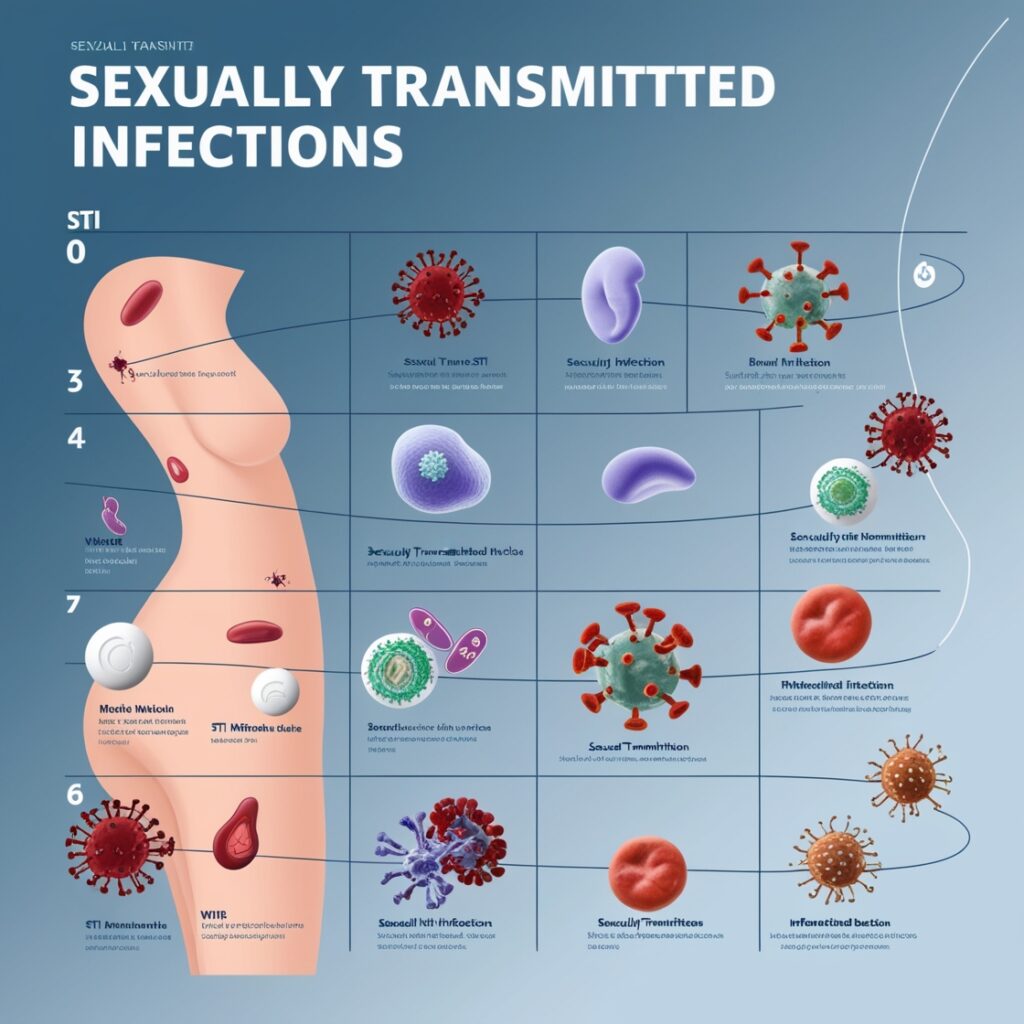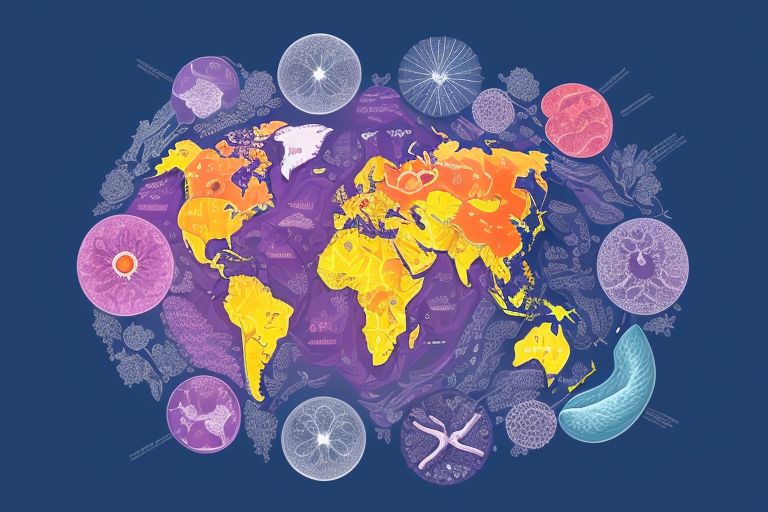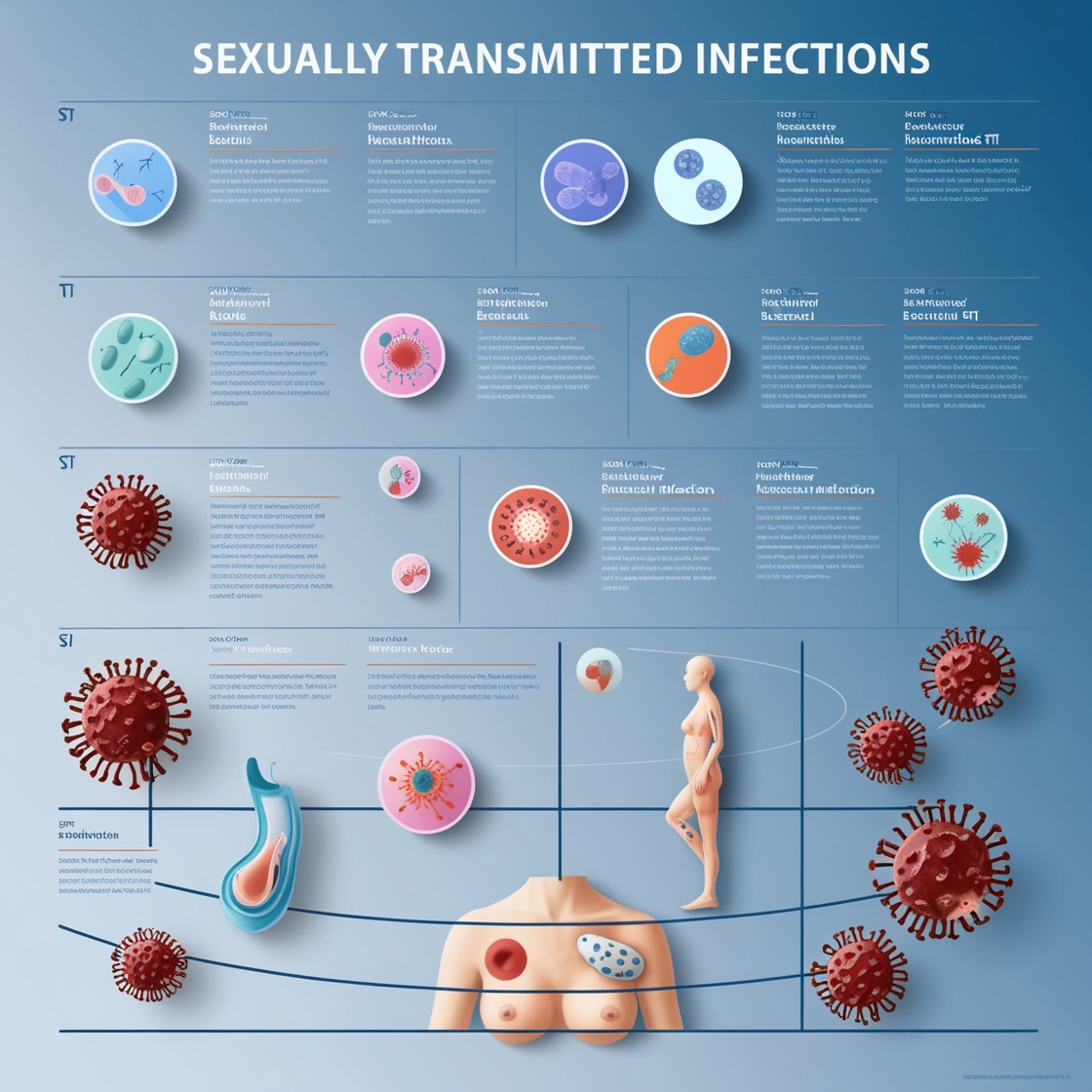By Thestrategicpost

Understanding Sexually Transmitted Infections (STIs) in 2024: A Global Health Perspective
With millions of cases each year, sexually transmitted infections (STIs) remain a major global public health concern. The prevalence of STIs is still high despite advancements in prevention and treatment, especially in low- and middle-income countries (LMICs). Using up-to-date information and professional analysis, this article offers a thorough examination of the situation of STIs today, their effects on public health, and the ongoing global efforts to combat them.
Key Facts About STIs in 2024
STIs are among the most common infectious diseases, with over 1 million new curable infections acquired daily among people aged 15-49. In 2020 alone, an estimated 374 million new cases of curable STIs were reported, including chlamydia, gonorrhoea, syphilis, and trichomoniasis. The majority of these infections are asymptomatic, contributing to their widespread transmission and complicating efforts to control them.
Syphilis remains one of the most critical sexually transmitted infections (STIs) and continues to represent a considerable public health challenge. In the year 2022, it was estimated that approximately 8 million individuals aged 15 to 49 were diagnosed with syphilis, which included around 1.1 million pregnant women. This situation resulted in more than 390,000 negative birth outcomes. Furthermore, it is estimated that over 500 million individuals within the same age demographic are living with a genital infection caused by the herpes simplex virus (HSV), while human papillomavirus (HPV) is linked to more than 311,000 fatalities from cervical cancer annually.
STIs also have a profound impact on sexual and reproductive health, leading to stigmatization, infertility, cancers, pregnancy complications, and an increased risk of HIV transmission. The rise of antimicrobial resistance (AMR) among certain STIs, particularly gonorrhoea, further complicates efforts to reduce the global burden of these infections.

The Scope of the STI Problem
STIs are caused by a diverse range of pathogens, including bacteria, viruses, and parasites, transmitted through sexual contact. More than 30 different organisms are known to cause STIs, and while many are curable, others are not. The four curable STIs—chlamydia, gonorrhoea, syphilis, and trichomoniasis—remain prevalent worldwide. In contrast, viral STIs such as hepatitis B, HSV, HIV, and HPV are incurable, with vaccines only available for hepatitis B and HPV.
Emerging infections that can be transmitted sexually, such as mpox, Shigella sonnei, Neisseria meningitidis, Ebola, and Zika, along with the re-emergence of neglected STIs like lymphogranuloma venereum, present new challenges in STI prevention and control. The global health community must adapt to these evolving threats to ensure adequate STI services and interventions are available.
The Impact of STIs on Global Health
The consequences of STIs extend beyond the immediate impact of the infections themselves. STIs like herpes, gonorrhoea, and syphilis can significantly increase the risk of acquiring HIV, complicating efforts to control the HIV epidemic. Mother-to-child transmission of STIs can result in severe outcomes, including stillbirth, neonatal death, low birth weight, prematurity, sepsis, neonatal conjunctivitis, and congenital deformities.
HPV infection is the primary cause of cervical cancer, a leading cause of cancer-related deaths among women. In men who have sex with men, HPV can also cause anal cancer. Hepatitis B is another major public health concern, responsible for over 1 million deaths in 2022 due to cirrhosis and hepatocellular carcinoma. Additionally, STIs such as gonorrhoea and chlamydia are major causes of pelvic inflammatory disease and infertility in women.
Prevention Strategies for STIs
Prevention is the cornerstone of STI control efforts. Consistent and correct use of condoms remains one of the most effective methods of protection against STIs, including HIV. However, condoms do not provide complete protection against STIs that cause extra-genital ulcers, such as syphilis and genital herpes. Therefore, it is recommended that condoms be used in all vaginal and anal sexual activities whenever possible.
Vaccination plays a crucial role in STI prevention. Safe and highly effective vaccines are available for hepatitis B and HPV. By the end of 2023, the HPV vaccine had been introduced in 140 countries, primarily in high- and middle-income regions, as part of routine immunization programs. The global goal is to eliminate cervical cancer as a public health problem by 2030 through high coverage of HPV vaccination, screening, and treatment of precancerous lesions.
Research into vaccines for other STIs is ongoing. Vaccine development for genital herpes is in advanced stages, with several candidates in early clinical trials. Additionally, there is growing evidence that the vaccine to prevent meningitis (MenB) may provide some cross-protection against gonorrhoea, although more research is needed in this area. Further research into vaccines for chlamydia, gonorrhoea, syphilis, and trichomoniasis is also essential.
Other biomedical interventions, such as adult voluntary medical male circumcision, microbicides, and partner treatment, are also important in preventing STIs. Ongoing trials are evaluating the benefits of pre- and post-exposure prophylaxis for STIs, with considerations for their potential impact on AMR.
Challenges in STI Diagnosis
STIs are often asymptomatic, making diagnosis challenging. When symptoms do occur, they are often non-specific, complicating accurate diagnosis. In high-income countries, molecular diagnostic tests are widely used, particularly for asymptomatic infections. However, these tests are often unavailable or unaffordable in LMICs, where the burden of STIs is highest.
In contrast, inexpensive and rapid tests are available for syphilis, hepatitis B, and HIV. The use of rapid syphilis tests and rapid dual HIV/syphilis tests is becoming more common in resource-limited settings, improving access to diagnosis and treatment. However, the development of more rapid tests for other STIs could significantly enhance diagnostic capabilities in these settings.
Treatment Options and Challenges
Effective treatment is available for several STIs, including the three bacterial infections (chlamydia, gonorrhoea, and syphilis) and one parasitic infection (trichomoniasis), which are generally curable with single-dose antibiotics. However, for viral STIs like herpes and HIV, treatment is limited to antiviral medications that can manage the disease but do not provide a cure. For hepatitis B, antiviral treatments can help control the virus and slow liver damage.
AMR has emerged as a significant challenge in the treatment of STIs, particularly gonorrhoea. The Gonococcal AMR Surveillance Programme (GASP) has documented high rates of resistance to many antibiotics, including quinolones, azithromycin, and extended-spectrum cephalosporins, the last-line treatment for gonorrhoea. AMR is also an issue for other STIs, such as Mycoplasma genitalium, although systematic monitoring is lacking.
STI Case Management
In many LMICs, STI case management relies on syndromic management, where health workers diagnose infections based on consistent, easily recognizable symptoms rather than laboratory tests. This approach allows for rapid, same-day treatment but often leads to overtreatment or missed diagnoses, as most STIs are asymptomatic. WHO recommends enhancing syndromic management by incorporating laboratory testing to support diagnosis wherever possible.
Treatment decisions should be made based on laboratory results in environments where quality-assured molecular tests are accessible. Adolescents, pregnant women, men who have sex with men, sex workers, and other high-risk groups also require screening methods. One of the most important aspects of STI case management is treating sexual partners in order to stop the spread of the illness and stop reinfection.
Addressing the Spread of STIs
Controlling the spread of STIs requires a multifaceted approach. Behavioral change is one of the most challenging aspects, as it involves addressing deeply ingrained societal norms and stigmas. Information, education, and counseling can improve awareness and encourage individuals to seek care and adopt safer sexual practices. However, these efforts are often hampered by a lack of public awareness, inadequate training among health workers, and the pervasive stigma surrounding STIs.
Health services for the screening and treatment of sexually transmitted infections (STIs) are inadequate in numerous regions globally. Key obstacles to accessing care include insufficient resources, societal stigma, substandard service quality, and the burden of out-of-pocket costs. Groups that experience the highest prevalence of STIs, including sex workers, men who have sex with men, individuals who inject drugs, incarcerated persons, transient populations, and adolescents in countries heavily affected by HIV, frequently encounter significant barriers to obtaining appropriate and supportive health services.
WHO’s Global Response to STIs
The World Health Organization (WHO) plays a critical role in guiding global efforts to combat STIs. The organization’s work is currently guided by the Global Health Sector Strategy on HIV, Hepatitis, and Sexually Transmitted Infections, 2022-2030. This framework includes setting global targets, norms, and standards for STI prevention, testing, and treatment.
WHO supports countries in developing national strategic plans and guidelines, creating environments that encourage discussion of STIs, scaling up primary prevention efforts, and increasing the accessibility of quality STI care. The organization also facilitates the adoption of point-of-care tests, enhances health interventions such as hepatitis B and HPV vaccination, and strengthens the capacity to monitor STI trends and respond to AMR.
Conclusion
STIs remain a significant global health challenge, with far-reaching impacts on sexual and reproductive health. While progress has been made in prevention, diagnosis, and treatment, significant gaps remain, particularly in low- and middle-income countries. Addressing these challenges requires a coordinated global effort, with a focus on enhancing prevention strategies, improving access to diagnostic tools, and addressing the growing threat of antimicrobial resistance.
The ongoing work of WHO and other health organizations is crucial in achieving global health targets and reducing the burden of STIs. By continuing to invest in research, education, and health services, the global community can make significant strides toward improving sexual and reproductive health outcomes for millions of people worldwide.
References
Welton NJ, James C, Harfouche M, et al. Bull World Health Organ. 2020;98(5):315-329. Herpes simplex virus: estimates of global infection prevalence and incidence for the year 2016.
Bray F, Jemal A, Torre LA, Siegel RL, Ferlay J, Soerjomataram I. Statistics on cancer worldwide for 2018: GLOBOCAN estimates global incidence and mortality for 36 cancer types across 185 nations. CA Nov. 2018, Cancer J Clin. 68(6):394–424. Epub 2018 Sep 12. Correction in: CA In July 2020, Cancer J Clin., 70(4):313.
Unemo M, Galarza P, Ndowa F, Martin I, Dillon JR, Galas M, Ramon-Pardo P, Weinstock H, Wi T, Lahra MM, Escher M, Eremin S, Cole MJ, and Wi T. An observational study conducted retrospectively on Neisseria gonorrhoeae as part of the WHO’s global antimicrobial resistance monitoring (GASP/GLASS) during 2017–2018. 2021; Lancet Microbe 2: e627–36

UseFull Resources:
| Resources | Resources |
|---|---|
| Tooldar: Tooldar | Hemingway Editor: Hemingway Editor |
| Ilovepdf3: Ilovepdf3 | Grammarly: Grammarly |
| Adorepdf: Adorepdf | Coursera: Coursera |
| Custom Design Agency: Articon Design Agency | Udemy: Udemy |
| Google: Google | Khan Academy: Khan Academy |
| Yandex: Yandex | Wolfram Alpha: Wolfram Alpha |
| Baidu: Baidu | TED Talks: TED Talks |
| Medium: Medium | Skillshare: Skillshare |
| Quora: Quora | Canva: Canva |
| Duolingo: Duolingo | Figma: Figma |
| Nerdfitness: Nerdfitness | Trello: Trello |
| DeepL: DeepL | Notion: Notion |
| LinkedIn: LinkedIn | Asana: Asana |
| Stack Overflow: Stack Overflow | Mailchimp: Mailchimp |
| GitHub: GitHub | Zapier: Zapier |
Note : These Above Resources Are just for Educational and ease of use Purposes we neither Endorse them, they were working at the time of sharing.











